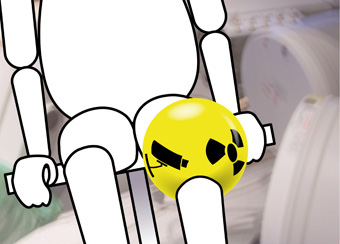RECONSTRUCTION OF PATIENTS ‘3D KNEE KINEMATICS IN DAILY LIFE CONDITIONS
- Contact person: Kamiar Aminian
- People involved: Arnaud Barré
- Partners: CHUV
- Funding source:

Overview
Presently the most significant source of error for 3D kinematics reconstruction of underlying bones, from sensors or markers placed on the skin, is the movement of the skin, called soft tissue artifact (STA). Based on new imaging techniques using bi-plane fluoroscopy, semi invasive bone kinematics reconstruction is presently available by tracking implants or tantalum beads inserted in bones. Bi-plane fluoroscopy analysis, called Roentgen Sterephotogrammetric Analysis (RSA) is limited to research applications for patients with implant or metallic beads inserted in bones. The need of a suitable STA compensation technique is required not only for “in lab” applications, but also for the evaluation of patient treatment in daily conditions in order to assess accurately 3D joint kinematics.
This project aims to design an ambulatory system using body fixed inertial sensors able to compensate STA in order to reconstruct 3D knee orientation accurately from recorded signals during daily life conditions. In this project, knee kinematics is measured directly by RSA without implant or inserted tantalum beads by designing a bone motion tracking algorithm. A new 3D knee orientation reconstruction model will be designed using skin markers by compensating STA from markers’ position. The new STA compensation model will consider signal from inertial sensors placed on skin or on fixation plates in order to obtain accurate 3D knee orientation in daily conditions. Finally, the efficiency of the methods in patients before and after knee arthroplasty will be studied.